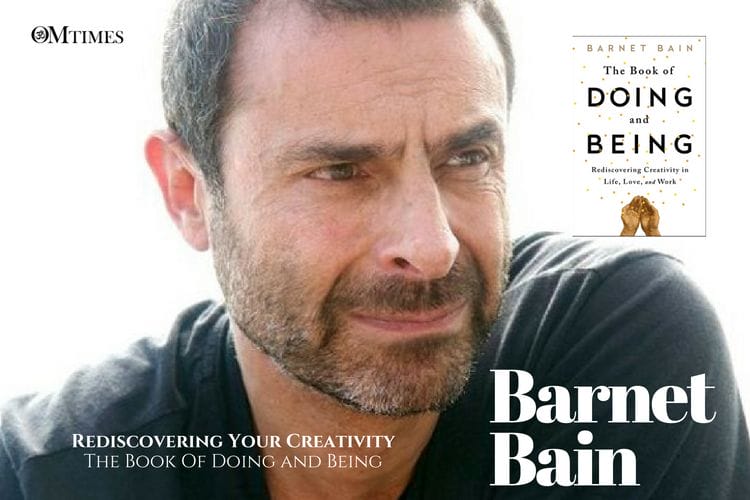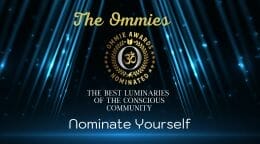Barnet Bain: Rediscovering Your Creativity

 The other piece that is important to consider around this issue of education and creativity is that you’re right, it is a tragedy and a disservice to our children that creativity is not concentrated upon in schools. For a while, the subjects that involve the head, like computations, mathematics, and analysis, were critical. The ones that do not involve the head, like art, music, appreciation of beauty and ethics, which are being cut from our educational programs. But they, in fact, the ones that foster in our children the ability to have empathy, to come from the heart, to be in their bodies, and not to just have their entire focus of attention living in their head. But they’re not perceived to be of value
The other piece that is important to consider around this issue of education and creativity is that you’re right, it is a tragedy and a disservice to our children that creativity is not concentrated upon in schools. For a while, the subjects that involve the head, like computations, mathematics, and analysis, were critical. The ones that do not involve the head, like art, music, appreciation of beauty and ethics, which are being cut from our educational programs. But they, in fact, the ones that foster in our children the ability to have empathy, to come from the heart, to be in their bodies, and not to just have their entire focus of attention living in their head. But they’re not perceived to be of value
Most children, most adults for that matter, me included, are quite challenged around incorporating their consciousness and awareness into their bodies in any sustained way. If you say to somebody, ‘Where do you exist, put your hand on where you think you are,’ they almost always put their hands on their heads. We have become separated from our bodies, and very analytical. Our body doesn’t analyze and judge, our head does. And it’s important, it’s a critical function, but it’s not the only function, and now we live in a society that doesn’t know that.
There are many other kinds of intelligence, and none of those live in the head. There is intelligence that is beyond logic and reason, which dwell in the body, and those are precisely the kinds of maturity and skills that can be trained in children with programs that stress the arts and gym.
To expand our creativity and imagination to meet the challenges of a world that’s becoming new, we are going to have to add on different bits of intelligence that are all latent in all of us but are relatively undeveloped in most of us. Most of us put all of our attention on developing our capacities of logic and reason and thinking, very rarely on intuiting, imagining and connecting.
Sandie Sedgbeer: Many children that I meet say we learn by doing, not just by hearing, not having facts stuffed into us. So, they know what they need to learn and to grow – working from their bodies and not from their heads.
Barnet Bain: I fully understand a worldview that elevates doing over being, that elevates thinking over being and imagining, and that equates thinking with imagining. I don’t think it’s bad or wrong; it’s simply an approach that will yield increasingly stressful challenges because trying to outthink life itself, the head logic-and-reason analysis that only deals with a certain subset of reality. But the world seems to be showing us that there’s more to it than logic and reason, and the challenges that we face are not going to be met by logic and reason.
And so, it’s my desire and my passion, and certainly a lot of fun to explore what is there beyond logic and beyond reason, what else is there? And there’s an endless opportunity to begin to explore the creativity that lives outside of logic. I’m more interested in where we’re going than where we’ve been, what we can learn rather than what we can affirm inside of logic and reason. What can we learn about aliveness? What can we learn about the different kinds of intelligence, about the intelligence of the body, musical intelligence, geometric intelligence and empathic intelligence? Everything is meaningful. Everything is connected. The head operates by labeling and separating, slicing and dicing, and that’s an important quality. But, it does not have any attunement to the holistic nature of things; that is the realm of the imagination.
Sandie Sedgbeer: In your experience, working so closely with creativity, with your curriculum having been used in communities, schools, and corporations, are you aware that people generally are becoming more cognizant of the need to bring back imagination and creativity into children’s lives?
Barnet Bain: When we attempt to go about teaching creativity from the head, we are not teaching creativity or expanding the imagination. Imagination is a capacity that is trained by our circumstances. And so, all of the disappointments, the hurts and the injuries we sustain as small children, all of our desires for love or for independence that is not sufficiently met are what form our sense of self. And unless the sense of self that was formed very young is understood, and seen and addressed, we can’t really open up our imaginations or our creative capacities because creativity is not born in the head; it’s born in the body. It lives in the personal body, and it lives in the body of the world. And the head cannot connect to the body of the world. Only our personal bodies can connect through feelings and emotions to the body of the world.
So, as Robert Frost said, a poem does not begin in the head. It begins with a feeling. It’s an uncried tear or excitement in the belly at the sight of something beautiful. The head will never understand that.
The good news is we don’t have to lament and be worried that the world’s in a terrible place and our children don’t have the benefit of a juicy environment to develop their imaginative capacities. I mean to develop their capacities to feel deep emotion along with the capacity for logic and linear thinking both, because when we take that on for ourselves as adults, or as parents, family or as friends, we begin to develop that. And we’re never too old to begin to become aware of how our sense of the world is formed by our earliest years? And to deal with some of the circumstances that molded us, which we continue to hold in the form of beliefs and give energy to. When we, as adults, take on that wonderful opportunity, it miraculously impacts those around us, especially our children.
Sandie Sedgbeer: Barnet Bain, as a film producer, director, and writer, you’ve worked with some of Hollywood’s most creative artists. What is the most important thing that you have learned from them?
Barnet Bain: The greatest artists I have had the pleasure to witness and be involved with have magnificent intellects, but even more important, they are aware of themselves in their bodies. And so, they have the capacity for empathy, for compassion and passion. None of these things are thought. They have a deep repertoire of feelings that they have access to. Most people don’t have access to feelings; they have access to thoughts about feelings.
The most exquisite artists that I’ve had the pleasure to meet the model for us what it is to be in their bodies, to feel connected, to have an awareness of their body feeling. It’s in that way they are leaders.
Sandie Sedgbeer: The Book Of Doing and Being contains exercises you designed to activate creativity by “jostling the connections between the subconscious and the conscious.” Tell me more about those.
Barnet Bain: Many practices invite one to stimulate underused or underdeveloped aspects of ourselves. Some can be as playful as paying attention to the rhythms around you, the sound of the washing machine rocking and rattling and rolling in the next room. What is the rhythm of it? What is the symphony of that sound along with the garbage truck that’s coming up the street?
There are all kinds of ways that we can begin to tune our attention to pay attention to the world in a different an unexpected way.
And then, of course, there are invitations to slow down and to move the point of our attention from our head and our thought stream into our bodies. That begins with acknowledging that we do have a thought stream and what’s going on with it and maybe taking a few breaths, centering, closing our eyes and becoming aware of our breath going in and out of our nose. Paying attention to that with some awareness, just being aware of that and gently bringing our thoughts and attention back to the feeling of our breath going in and out? those kinds of practices.
Everything is a creative act. And when we can become conscious of our habituated ways of thinking and feeling, and fixed ideas about life, as these come up, sometimes as a thought, sometimes a feeling, we can realize 99 times out of 100 that this is an old feeling and not about now, this is an old thought and not about now. When I know that, I can put in the clutch a little bit, I can put it in neutral, and I can say, ‘Wow. This is not about now. So, what is about now?’ Now I have an opportunity to make a virgin choice. How remarkable.
But I really could not know or act differently unless I know that most of my kneejerk actions and choices have been programmed in so long ago.
Sandie Sedgbeer: The book offers some very creative suggestions: word hacks; how to use a newspaper or publication to prime the pump of creativity, tapping for EFT, and ‘The Amazing Thing.’ Would you share a little bit about that with us?
Continue to Page 3 of the Interview with Barnet Bain
A veteran broadcaster, author, and media consultant, Sandie Sedgbeer brings her incisive interviewing style to a brand new series of radio programs, What Is Going OM on OMTimes Radio, showcasing the world’s leading thinkers, scientists, authors, educators and parenting experts whose ideas are at the cutting edge. A professional journalist who cut her teeth in the ultra-competitive world of British newspapers and magazines, Sandie has interviewed a wide range of personalities from authors, scientists, celebrities, spiritual teachers, and politicians.









